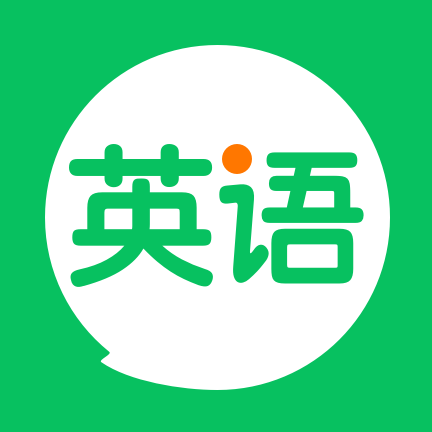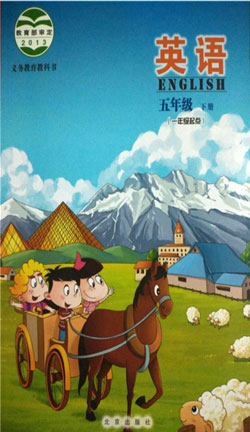UNIT FOUR REVISION课文句子跟读音频
Lesson 13
UNIT FOUR REVISION
第四单元 复习
Lesson 13
第十三课
Do you understand?
你理解了吗?
Tick (✓) or cross (✕).
判断对错。
Can you talk?
你会说吗?
Mike and Baobao are playing table tennis.
迈克和宝宝在打乒乓球。
play chess
下象棋
play baseball
打棒球
play basketball
打篮球
Lesson 13
第十三课
Can you write?
你会写吗?
Mum is cooking.
妈妈在做饭。
Dad is reparing the bicycle.
爸爸在修理自行车。
I am palying the piano.
我在弹钢琴。
Can you do?
你会做吗?
Eyes in the Dark
黑暗之眼
What has eyes but cannot see? It's the potato. Did you guess right? The little bumps on a potato's skin are its 'eyes'. An eye can grow into a new potato plant. Do you want to try and grow your own?
什么有眼睛但却看不见?是土豆。你猜对了吗?土豆皮上的小肿块就是它的眼睛。一只眼睛可以成长为一株新的土豆苗。你想试试种植你自己的吗?
Things you will need: a potato, some soil, and a flower pot.
你将需要的东西:一个土豆,一些土壤和一个花盆。
Put the potato in a dark place. Check it every day for small bumps or 'eyes'.
把土豆放在黑暗的地方。每天检查一下小肿块或者“眼睛”。
When you see the 'eyes', cut them off the potato.
当你看见“眼睛”,从土豆上切下它们。
Cover the 'eyes' with more soil. Water it but don't use too much water. Watch every day for about two weeks and see the changes.
用土壤盖住“眼睛”。给它们浇水但是不要太多。大约两个星期每天观察它的变化。
Fill the flower pot with some soil and then put the piece of potato on the soil with the 'eyes' facing up.
放一些土壤在花盆里,然后把土豆片“眼睛”朝上放在土壤里。
What happened? You can write down the changes here.
发生了什么?你可以把变化写在这里。
Day ______
星期______
Day ______
星期______
Day ______
星期______
Day ______
星期______
Day ______
星期______
Day ______
星期______
Day ______
星期______
Can you read and write?
你会读和写吗?
Facts About Trees
关于树的事实
Trees are tall plants.
树木是高的植物。
Trees can live for thousands of years.
树木可以存活上千年。
Some trees can grow taller than 100 metres.
一些树木可以长到100多米。
Trees produce oxygen and reduce the amount of carbon dioxide in the air.
树木制造氧气,减少空气中二氧化碳的排放量。
The roots of a tree usually grow underground. They help keep the tree stable and give it water and important nutrients.
树木的根通常长在地下。它们使树木稳固,供给水分和必要的养分。
Water and nutrients travel up the tree trunk, through the branches and all the way out to the leaves.
水和养分运输到树干,一路穿过树枝和树叶。
We can tell the age of a tree by growth rings in the wood.
我们可以通过木头的年轮分辨树木的年龄。
Planting trees can help protect the environment.
植树能够帮助我们保护环境。
We can use wood from trees in a number of different ways, for example, building a house and making furniture.
我们可以在许多不同的方面用到树木的木头,例如,建房子和做家具。
Lesson 13
第十三课
Task 1
任务1
Tick (✓) or cross (✕).
判断对错。
Trees can only live for 100 years.
树木仅仅只能活100年。
Water and nutrients travel down the tree trunk.
水和养分随着树干顺流而下。
We can tell the age of a tree by its roots.
我们可以通过树木的根来分辨它的年龄。
Task 2
任务2
Fill in the blanks.
填空。
Water travels up the tree trunk, through the branches and all the way out to the leaves.
水随着树干顺流而上,通过树枝,一路到达树叶。
We can tell the age of a tree by growth rings.
我们可以通过树木的年轮来分辨它的年龄。
We can use wood from trees to build a house and make furniture.
我们可以用树木的木头建房子和做家具。
Task 3
任务3
Find out the English names for trees and match them with pictures.
找出树木的英文名称并与图片搭配起来。
pine
松树
palm
棕榈树
willow
柳树
bamboo
竹子
maple
枫树
Lesson 14
Lesson 14
第十四课
Do you understand?
你理解了吗?
Listen and number.
听一听并标数字。
Can you talk?
你会说吗?
How can we make use of ... ?
我们可以怎样利用……?
the river
河流
the trees
树木
the flowers
花朵
the land
陆地
Lesson 14
第十四课
Can you write?
你会写吗?
How do students enjoy their weekends?
学生们怎样度过他们的周末?
Some visit grandparents, and others go to the parks.
一些去看望祖父母,另外一些去公园。
How do people travel?
人们怎么样旅行?
Some by plane, and others by train.
一些乘飞机,其他的乘火车。
What do children like to eat?
孩子们喜欢吃什么?
Some like to eat hamburgers, and others like to eat rice.
一些喜欢吃汉堡包,其他的喜欢吃米饭。
Can you do?
你会做吗?
How do leaves get water? You will say, 'The stem of a plant carries water from the roots to the leaves.' That's right! The stem is like a straw. Try the following experiment to see what happens.
叶子怎样获取水分?你会说:“植物的茎从根向叶子输送水分。”你说得对!茎就像一根吸管。试一试下面的实验看看会发生什么。
Things you need:
你需要的东西:
two celery stems with leaves but without roots; about 0.2 metres long
两个带叶不带根的芹菜茎;大约0.2米长
two bottles or big glasses
两个瓶子或者大的玻璃杯
red and blue colour
红色和蓝色的颜料
water
水
a piece of paper to write down the changes
一张写下其变化的白纸
Follow these steps:
遵循下面的步骤:
Fill the bottles or glasses with water.
用水装满瓶子或玻璃杯。
Put some red colour in one bottle and some blue colour in the other bottle.
把红颜料放到一个瓶子中,在另一个瓶子中放蓝颜料。
Put a celery stem in each bottle.
在每个瓶子里放一个芹菜茎。
Check the stems every hour and write down the changes.
每个小时检查一次茎并写下其变化。
Can you read and write?
你会读和写吗?
What Are Materials?
什么是原材料?
Stone, metal, wood, paper, and cloth are materials. We use them every day.
石头,金属,木材,纸张和布料都是原材料。我们每天都要用到它们。
Stone is a hard, heavy material. Most stones sink to the bottom of water. We get stone from the ground and from mountains. Stone does not bend, but it can be cut into shapes.
石头是很坚硬沉重的原材料。大多数石头都会沉到水底。我们从地面上和高山上得到石头。石头不会弯曲,但是可以被割成不同的形状。
We get metal from stone. Metals are strong and difficult to break. They are usually shiny. Metals are hard like stone, but we can bend them and make them into different shapes.
我们从石头中获取金属。金属坚固到难以打破。它们通常很有光泽。金属像石头一样坚硬,但是我们能使它们弯曲,也能把它们变成不同的形状。
Wood is a material from trees. Wood is a hard material, but it is not as hard as stone or metal. We can cut and shape wood with metal tools.
木材是来自树木的一种原材料。木材是一种坚硬的原材料,但是不像石头或金属一样坚硬。我们可以使用金属工具切割和塑造木材。
Paper is a soft material from plants. It is light and very easy to bend and fold.
纸张是一种来自植物的很柔软的原材料。它很轻,而且很容易弯曲和折叠。
Cloth is a soft material. There are different kinds of cloth. We make cloth from sheep's wool, cotton, and silk. We use cloth to make many things such as T-shirts and jeans.
布料是一种柔然的原材料。有很多不同种类的布料。我们可以用羊毛布,棉花和丝绸做布料。我们可以用布料做很多东西,比如T恤衫和牛仔裤。
Lesson 14
第十四课
Task 1
任务1
Tick (✓) or cross (✕).
判断对错。
Most stones sink to the bottom of water.
大多数石头都能沉到水底。
We can cut wood into different shapes.
我们可以将木头切割成不同的形状。
Task 2
任务2
Fill in the blanks.
填空。
We can use metal to make fences because metals are strong and difficult to break.
我们可以使用金属做栅栏因为金属坚固到难以打破。
We can fold cloth because cloth is a soft material.
我们可以折叠布料因为布料是一种柔软的原材料。
Task 3
任务3
Find the different materials in your daily life.
找出你日常生活中不同的原材料。
Things
物品;东西
book
书
Materials
材料
paper
纸张
Progress check
课程检测
I can understand what people talk about in each Listen and say.
我能够理解人们在每个听说中交谈的内容。
I can talk about what people are doing.
我能够谈论人们正在做什么。
I know the names of the different parts of a plant.
我了解了植物的不同部位的名词。
I can talk about how we make use of plants.
我能够谈论我们怎样利用植物。
I know how to give examples.
我知道如何举例子。
北京版五年级下册英语UNIT FOUR REVISION单词跟读音频
单词跟读will
different
job
follow
listen
exciting
enjoy
nephew
niece
daughter
up
plant
carry
same
often
lucky
chess
TV
talk
both
travel
nut
else
corn
photo
picture
have
sun
without
their


 切换教材
切换教材